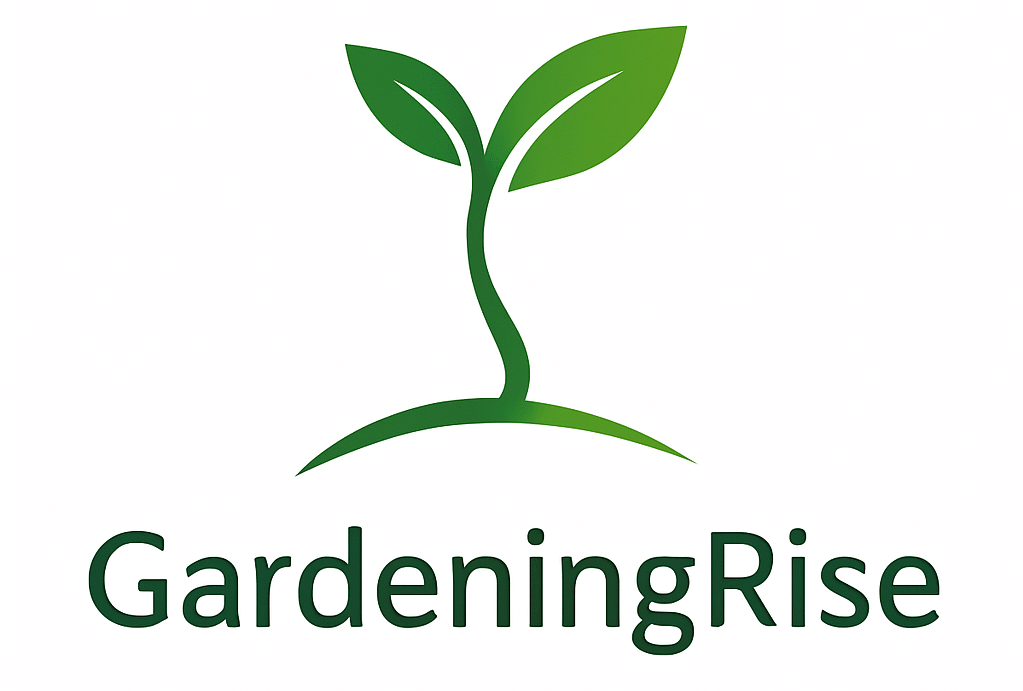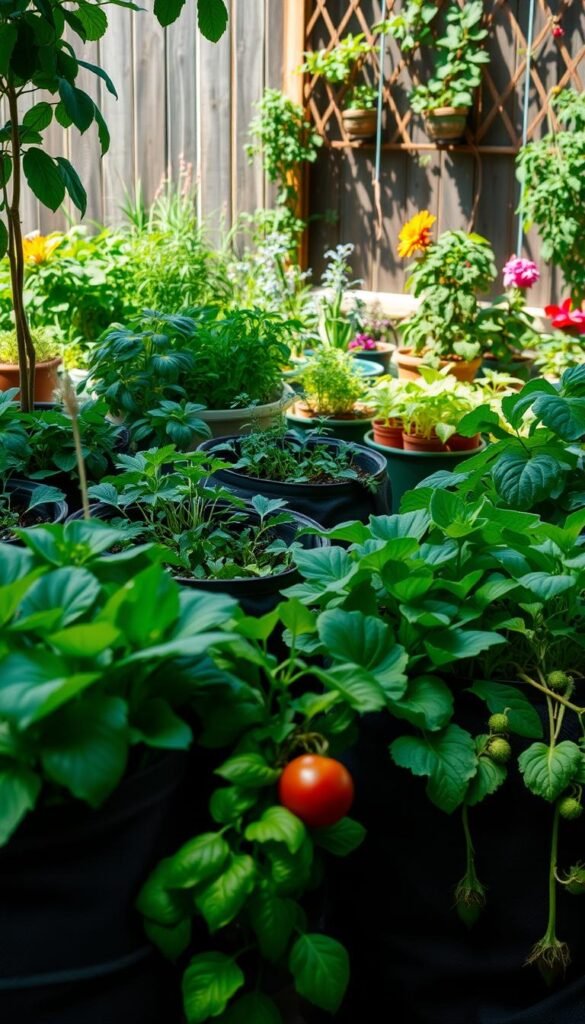Looking for a fresh way to elevate your garden? Fabric containers are reshaping how we nurture greenery, offering flexibility that rigid pots simply can’t match. Whether you’re working with a small balcony or a sprawling backyard, these lightweight alternatives provide unique benefits—and a few trade-offs—worth exploring.
This guide dives into everything you need to know. You’ll discover how their porous design promotes healthier root systems by preventing circling roots, a common issue in traditional planters. Better airflow and drainage also mean less risk of overwatering, giving your plants the balanced environment they crave.
But it’s not all sunshine! While these containers are easy to move and store, they require more frequent watering. We’ll break down practical tips to simplify maintenance and highlight which crops thrive best—think juicy tomatoes or crisp salad greens.
Key Takeaways
- Fabric containers improve root health by allowing natural air pruning.
- Their lightweight design makes rearranging your space effortless.
- Excellent drainage reduces the risk of waterlogged soil.
- Ideal for heat-sensitive plants due to better temperature control.
- Compact storage when empty saves valuable space.
- Certain vegetables, like peppers and herbs, excel in these setups.
Ready to rethink your approach? Let’s dig into the details and help you decide if this innovative method fits your gardening goals.
Introduction to Grow Bags and Their Benefits
Ever wondered how urban gardeners squeeze lush greenery into tiny patios? Flexible fabric planters are changing the game, offering smart solutions for modern green thumbs. These portable beds—typically made from breathable materials like felt or recycled plastic—let you customize soil blends for each crop’s needs.

The Rise of Grow Bags in Modern Gardening
Once niche, these soft-sided containers now dominate balcony gardens and rooftop farms. Their popularity stems from hassle-free mobility—grab the handles to chase sunlight or shield delicate greens from harsh weather. Renters love them because they’re easy to dismantle when moving day arrives.
Unlike rigid pots, their porous walls allow oxygen to reach roots, creating stronger systems. This air-pruning effect stops roots from spiraling, leading to denser nutrient absorption. Plus, excess moisture escapes easily, reducing rot risks.
Comparing Grow Bags with Traditional Containers
Let’s stack them up:
| Feature | Fabric Containers | Clay/Plastic Pots |
|---|---|---|
| Airflow | 360° ventilation | Limited to drainage holes |
| Temperature Control | Stays cooler in summer | Overheats faster |
| Storage | Folds flat | Bulky year-round |
While classic pots work for some, fabric options shine in tight spaces. Their lightweight design makes rearranging your setup a breeze. Ready to give your herbs or peppers a breathable upgrade?
Grow Bags Gardening Ideas: Pros, Cons, and Best Plants
How can lightweight containers transform your plant care routine? These fabric pots pack serious perks for urban and small-space growers. Their clever design solves common issues faced with rigid planters while introducing fresh possibilities for your green space.

Key Advantages of Using Grow Bags
Breathable fabric encourages stronger roots by letting air reach all sides of the soil. This prevents tangled roots and boosts nutrient uptake. Unlike plastic pots, they naturally release excess heat, protecting delicate roots during summer heatwaves.
Built-in handles make it easy to shuffle plants for optimal sunlight. Their collapsible design saves space when empty—perfect for renters or seasonal setups. Plus, superior drainage reduces soggy soil risks, keeping mold at bay.
Potential Drawbacks to Consider
These containers dry out faster than traditional options. You’ll need to check moisture levels daily in hot weather. While durable, most last just 2-3 seasons before fraying occurs.
Though eco-friendly options exist, many aren’t biodegradable. Visual appeal varies—some find their utilitarian look less charming than ceramic planters. Still, their functional benefits often outweigh style concerns for practical gardeners.
Weigh these factors against your routine. If mobility and root health top your list, they’re worth a try. For low-maintenance setups, traditional pots might suit better.
Best Plants to Grow in Your Grow Bags
What thrives best in these breathable containers? The answer might surprise you. From juicy vegetables to fragrant herbs, fabric containers unlock opportunities for both beginners and seasoned gardeners. Let’s explore which species love their flexible homes.

Ideal Vegetables, Herbs, and Flowers
Tomatoes and peppers adore the air-pruned roots these containers provide. Their deep root systems spread evenly, absorbing nutrients more efficiently. Potatoes also excel—simply roll down the sides as you hill soil, maximizing yields in compact spaces.
Basil, parsley, and lettuce thrive too. Their shallow roots benefit from the lightweight soil mix, while quick drainage prevents waterlogging. Move them easily to chase morning sun or avoid afternoon heat stress.
Don’t overlook flowers! Marigolds and petunias add vibrant color to patios. Their roots stay cooler compared to plastic pots, extending bloom times. Mix edibles and ornamentals for a functional yet beautiful setup.
Customize your soil blend for each plant’s needs. Acid-loving blueberries? Add peat moss. Mediterranean herbs? Boost sand content. Experimentation is key—track which varieties outperform others in your climate.
Urban dwellers, rejoice! Stack multiple sizes vertically or tuck them into balcony corners. No yard? No problem. These portable beds turn concrete jungles into lush retreats, one breathable container at a time.
Practical Tips for Maximizing Your Grow Bag Garden
Getting the most from your fabric containers starts with smart daily habits. Let’s explore how to balance their unique features with simple adjustments for healthier results.
Watering, Soil, and Drainage Considerations
Frequent hydration checks are essential. Fabric’s breathability lets soil dry faster—test moisture by sticking your finger 1-2 inches deep. If it feels dry, water slowly until it seeps through the bottom. Morning sessions help plants stay hydrated during peak heat.

Mix potting soil with 30% compost for nutrients that last. Add perlite or coconut coir to improve drainage. Elevate containers on bricks or stands to prevent puddles underneath. “A saucer beneath heavier setups catches runoff without blocking airflow,” suggests urban gardener Lisa Tran.
Enhancing Portability and Storage Solutions
Choose models with reinforced handles for easy lifting. Place larger containers on wheeled platforms if moving them often. When storing, shake out soil remnants and fold fabric flat—they’ll tuck neatly under beds or in closets.
Transplant seedlings directly into these containers to avoid root shock. Rotate their positions weekly for even sun exposure. Watch for frayed edges or fading—replace every 2-3 seasons to maintain performance.
Conclusion
Ready to give your green space a smart upgrade? Fabric containers offer a fresh take on nurturing greenery, blending portability with science-backed benefits. Their breathable design promotes vigorous roots while preventing waterlogging—a game-changer for urban setups or cramped patios.
You’ll enjoy effortless rearranging thanks to lightweight builds and sturdy handles. Though they dry out faster than ceramic pots, pairing them with moisture-retaining soil blends simplifies maintenance. Whether testing tomatoes or herbs, these versatile grow bags adapt to your needs season after season.
Consider your routine: if mobility and root health matter most, they’re worth the try. Share your successes with fellow enthusiasts—every garden journey thrives on shared wisdom. With thoughtful care, these flexible tools unlock thriving harvests in even the tiniest spaces.
Why wait? Grab a fabric bag, pick your favorite seeds, and watch your oasis flourish. Happy planting!






